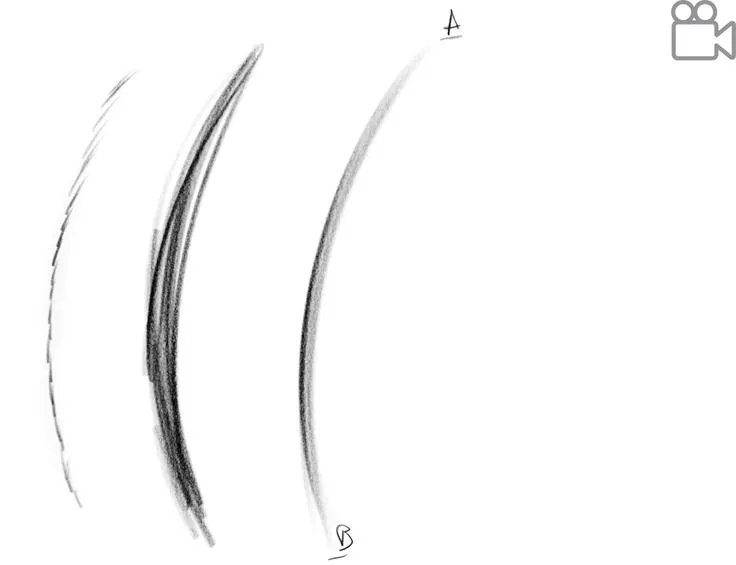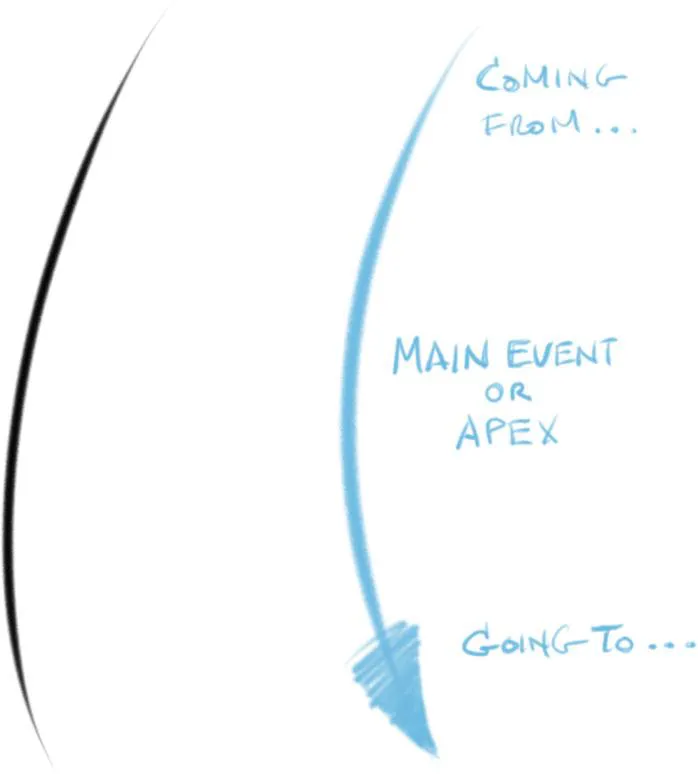Chapter 1
Seeing Life
What is it that creates life? FORCE! FORCE, or energy with purpose, is what we want to recognize in the world around us. I am going to lead you on a FORCE-full journey that will change the way you perceive the world you live in. This new perception will clear your mind of the fog of assumption. You will live in a new truth. This in turn will make you appreciate life to a new degree.
Drawing is the profound vehicle for our journey. Through it, you will also learn about yourself. Always remember, what you put down on the page is a direct reflection of your thoughts and feelings.
There is so much to appreciate and enjoy, so let’s get started.
1.1 THE AWARENESS OF FORCE
Drawing the body’s FORCES is the least instructed subject in figure drawing classes and yet it is the most important. The majority of books and instructors teach about copying what you see and not understanding it. I was extremely fortunate to have Jim McMullan as an instructor and close friend at the School of Visual Arts. He taught me to be aware of life in the figure.
The human figure is always full of FORCE—no matter how still it may seem. We are built to move, and therefore, even when a model is standing straight, there are FORCES to comprehend and address. We are always under the influence of gravity, which is an all-encompassing FORCE to recognize. When drawing, we need to think about the beauty of why and how the model works, not worrying about what angle to hold a pencil at in order to shade appropriately.
“Thinking is the hardest work there is, which is the probable reason why so few engage in it.”
Henry Ford
You want to draw what you know and empathize with. Draw with the mind’s eye, not only your vision. If you find you are having a hard time figuring out what is happening in a pose, then assume the pose yourself. This will definitely help your awareness of FORCE. We are all people. If a model takes a pose that radiates joy and you copy that pose physically yourself (all the way down to the facial expression), you will begin to feel what the model is feeling and know physically what the model is doing. When you see someone who is sad, how is it that you know that person feels that way?
As a fellow human being, you know that you assume the same physiology when you feel sad. You experience empathy through humanity.
Never forget that mind and body are one!
1.2 WHAT IS THE MAIN IDEA?
Let’s discuss the pyramid of ideas that represent the model’s pose. Remember, we want to deal with the top of the pyramid, the largest idea, first. You will create some general statements about the figure. They will be the first step on your road to understanding FORCE. With experience, you will become more specific.
Allow me to share with you an exercise I host in class. For the first minute, I have the students write what their goals are for their drawing of the model. I have them list the goals in a hierarchal manner. Then, for the last 4 minutes, they draw the model and strive to achieve those goals.
1.3 VOCABULARY POWER
Using the comparison of a writer to an artist, to express our ideas, we must understand our drawn language via its own vocabulary. The more vast our vocabulary, the clearer, more intelligent, and expressive our thoughts. There are no great writers without the knowledge to write.
Our language throughout this book is drawing, and our understanding of line is our control of that language. The strength of line is immeasurable. To harness its power, though, one must understand how to see FORCE. Draw the verbs of the figure. This is where we want to direct our concentration. Draw what the body is DOING, not just the body. While having an internal dialogue, think “the stretching arm or thrusting hip,” not “the arm is here and it’s this thick, and look at the shadow on it.” Verbs come first and then the nouns they are affecting. I have students bring in a thesaurus to increase their vocabulary and, thus, their experience of the model.
As important as line is, remember that the drawings are not about line. They are about ideas. The line is your idea. Don’t do a drawing for the sake of beautiful lines. Create a drawing that expresses your experience.
Here are the types of line that most describe FORCE in the body.
1.4 TYPES OF LINE IN DRAWING
Left: This is the infamous hairy line. Uncertainty and fear take us across the page through thousands of broken thoughts instead of drawing one line per idea. Drawing like this never gives you the opportunity to move on to bigger ideas or feel FORCE and direction in your hand and mind.
Middle: It is sketchy and created by backward and forward motion. No direction. The line or, more importantly, its idea does not start somewhere, have a purpose, and go somewhere. There is no clear idea.
Right: Here is our curved line with FORCE and direction. The one line addresses one idea. The line starts somewhere, does something, and goes somewhere. This is achieved with a confident stroking of the paper with the pencil. The arrow example shows you the direction of the energy or its path. This is Directional FORCE.
Forewarning: I am not suggesting uptightness with the line. You don’t have to get it right the first time. Let your hand sweep over the paper’s surface in the directions that the model moves in until you have absorbed the pose’s idea. Then make your marks by slowly applying pressure to the paper with the pencil while you are still in motion. Notice how you can control the line’s value. This discipline of mark making is of tremendous value because when you draw, your head will already think about where energy comes from, what it is doing, and where it goes. Feel liberated and excited, and be courageous.
1.5 THE DIRECTIONAL FORCE LINE
So that leads us to our FORCE line found on the left. The core idea is that the line actually represents the idea of FORCE! One line = one Directional FORCE.
On the right in blue is the breakdown of that Directional FORCE. Notice that it contains three regions. You could think of the top and bottom regions as questions, where did this FORCE come from, and where is it going to? Where is the apex of this Directional FORCE? These are some of the questions you can fill your mind with while drawing.
Throughout the book, I will use the color BLUE to present Directional FORCE.
The Directional FORCE line does not need to be accomplished with one clean strok...



